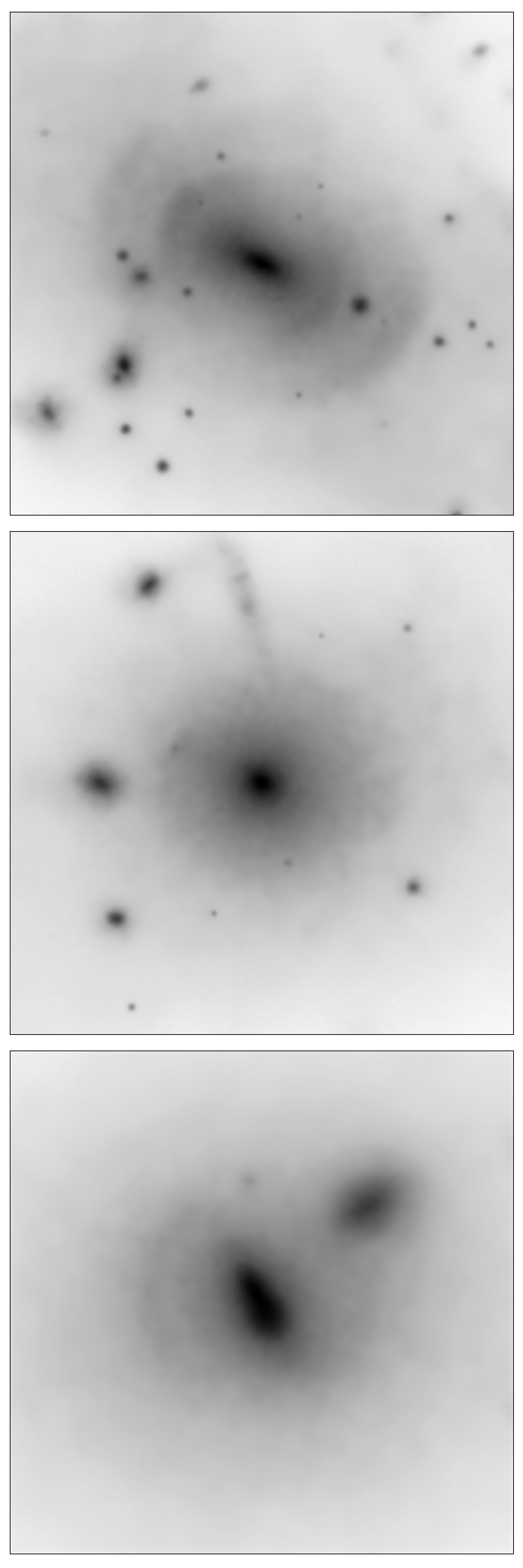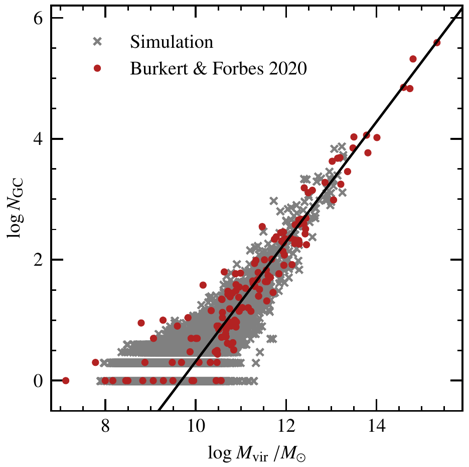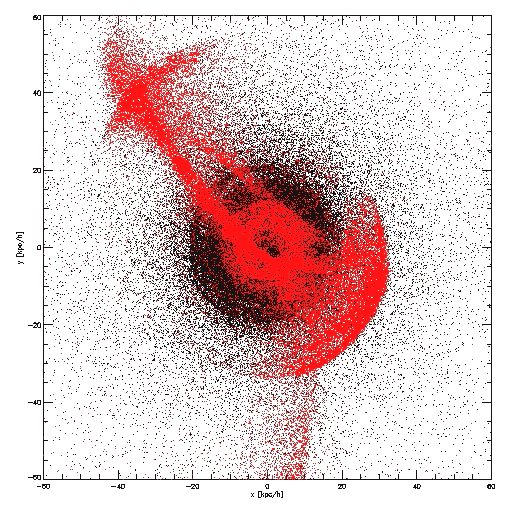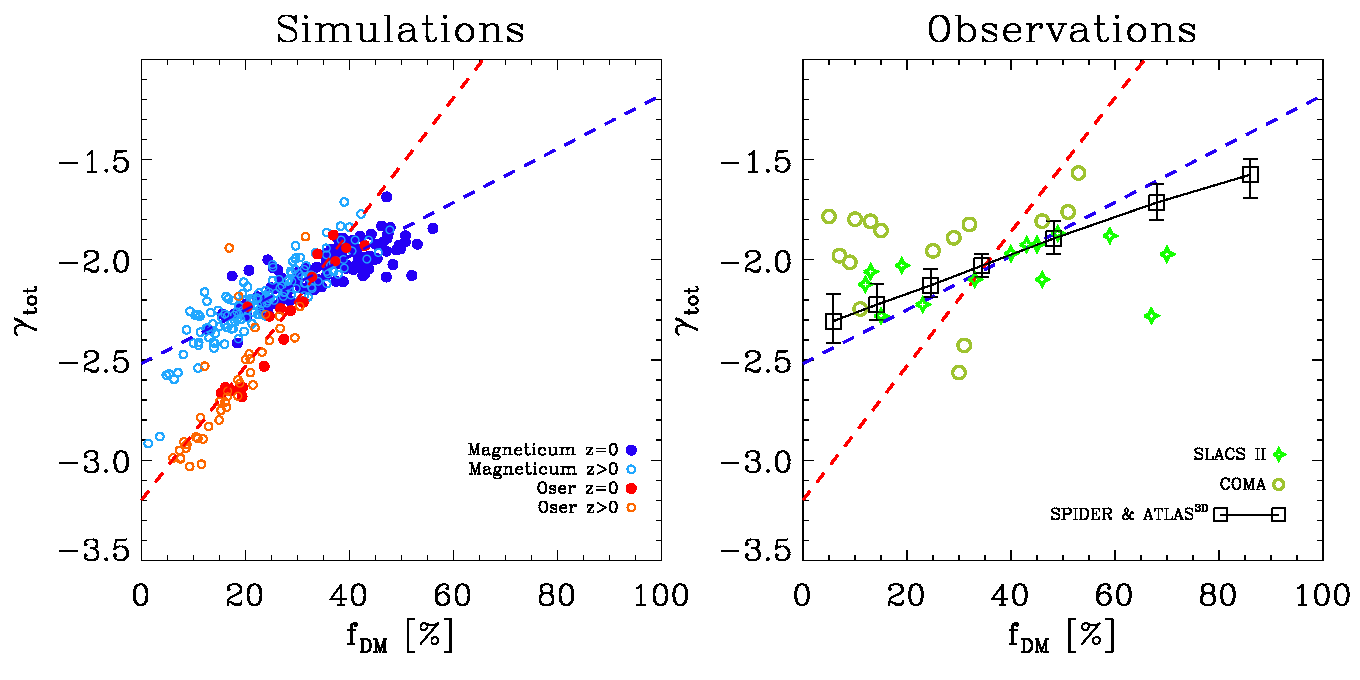Outer Halos and Assembly of Galaxies· · · · · Tidal Features and Satellite Planes
The rapidly improving quality and resolution of both low surface brightness observations and cosmological simulations of galaxies enables an increasingly thorough investigation of the imprints of the formation history in the outer, unrelaxed regions of galaxies, and a direct comparison to another tracer of galaxy formation, the internal kinematics. In our work, we identified tidal tails, shells, streams, and satellite planes, and connected their existence to the amount of rotational support and the formation histories of the host galaxies. Tidal features were visually classified from a three-dimensional rendering of the simulated galaxies by several scientists independently. Only features that were identified by at least half of the participating individuals are considered as existing features. The results are compared to observations of the MATLAS survey. Shells are preferentially found around kinematically slowly rotating galaxies in both simulations and observations, while streams can be found around all kind of galaxies with a slightly higher probability to be present around less rotationally supported galaxies. Tails and satellite planes, however, appear independently of the internal kinematics of the central galaxy, indicating that they are formed through processes that have not (yet) affected the internal kinematics. As shells are formed through radial merger events while streams are remnants of circular merger infall, this suggests that the orbital angular momentum of the merger event could play a more crucial role in transforming the host galaxy than previously anticipated. The existence of a shell around a given slow rotator can further be used to distinguish the radial merger formation scenario from other formation pathways of slow rotators. Valenzuela & Remus, 2022· · · · · Globular Cluster Populations
A long-standing observed curiosity of globular clusters (GCs) has been that both the number of GCs in a galaxy and their total mass are linearly correlated with the galaxy's virial mass, whereas the stellar component itself shows no such linear correlation. This relation has been shown to result from the hierarchical build-up of galaxies, where more massive galaxies are the result of many mergers, thus accumulating GCs proportional to the virial mass. A number of empirical models have succeeded in reproducing the linear relation for the GC numbers for the large masses, but lack GCs at the low galaxy mass end. Our work combines two different formation pathways for GCs, which roughly correspond to early ideas of blue and red GC formation. Blue GCs are formed in small halos at early times, whereas red GCs are formed in gas-rich mergers. By combining the two formation pathways, GCs populate galaxies of all masses (see the figure) and the GC age distributions match those determined from local GC populations. Interestingly, the fraction of GCs formed through the gas-rich merger formation channel agree very well with the red GC fractions observed from galaxies in the Local Universe. Valenzuela et al., 2021· · · · · Stellar Halos
Outer halos of galaxies are known to store essential information about the formation history and merger-induced evolution of their central galaxies, since the relaxation timescales in these outer regions are much larger than in the inner parts and thus the memory of the events is conserved over a long period. The merger history provides fundamental insights into the processes of morphological changes and the importance of gas dynamics in changing the appearance of galaxies, broadening our understanding of the different mechanisms of structure formation. Observations of outer stellar halos extend from the interstellar light within galaxy clusters down to Milky-Way-mass galaxies, reaching unprecedented depth in magnitudes (see, for example, the Dragonfly Project). However, simulations to accompany these observations to help decipher the information hidden in these observations need to be provided, and this is one of the aims of the work done in our group. Our work covers a broad range of topics, starting from the diffuse stellar component in galaxy clusters (see Remus et al., 2017, where the velocity and density distributions of the BCGs and the diffuse component were analyzed) over global radial stellar halo properties (see Remus et al., 2016 for a study about the shape of the global outer stellar halos featuring Einasto density profiles and Forbes & Remus 2018 for a comparison of the metallicity gradients of observed globular cluster systems and simulated accreted galaxy components) to outer stellar halo kinematics (Schulze et al., 2020). These studies were performed using the Magneticum Pathfinder simulation set, as this provides large enough statistics from galaxy clusters down to galaxy scales. In addition, members of our team have been involded in studies of isolated merger simulations with the aim to understand where the mass from different progenitor galaxies is deposited (Karademir et al., 2019) , and to trace the origin of different features like streams, umbrellas and shells back to their original merger configurations. These isolated merger simulations also provided an opportunity to search for signatures of major merger events which can be observed, for example the σ-bump (see Schauer et al., 2014). These features can then be observed using tracer populations at large radii, for example globular clusters, as is done with the SLUGGS survey. · · · · · Global Halos
Additionally, in this radius regime the dark matter becomes the dominant part of the galaxy, turning this region into the perfect place to study the interplay between the dark matter and the stars. This interaction between the collisionless components of a galaxy, although much slower than the gas-induced processes, significantly alters the appearance of a galaxy in the long term. A better understanding of those processes can help to shed light onto the dark sides of the galaxies. The total (stellar plus dark matter) radial density profiles of spheroidal galaxies have been shown to be close to isothermal from both observations and simulations, with steeper slopes more prominent at higher redshifts and smaller masses. In studies provided by members of this working group, it has been shown that the steepness of the slope is closely correlated with the formation history of the galaxy, and that violent relaxation is the main driver for the isothermality, enabled through dry merger events. The slopes of these total density profiles have also been shown to be closely correlated with the central dark matter fractions of the galaxies, with different correlations found for different implementations of feedback. Thus, we have shown that this correlation is an excellent test case for the feedback implementations, as it can also be observed. For more details on this work, see Remus et al., 2017 and Remus et al., 2013. |